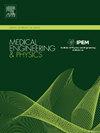Effect of blast orientation, multi-point blasts, and repetitive blasts on brain injury
Abstract
Explosions in the battlefield can result in brain damage. Research on the effects of shock waves on brain tissue mainly focuses on the effects of single-orientation blast waves, while there have been few studies on the dynamic response of the human brain to directional explosions in different planes, multi-point explosions and repetitive explosions. Therefore, the brain tissue response and the intracranial pressure (ICP) caused by different blast loadings were numerically simulated using the CONWEP method. In the study of the blast in different directions, the lateral explosion blast wave was found to cause greater ICP than did blasts from other directions. When multi-point explosions occurred in the sagittal plane simultaneously, the ICP in the temporal lobe increased by 37.8 % and the ICP in the parietal lobe decreased by 17.6 %. When multi-point explosions occurred in the horizontal plane, the ICP in the frontal lobe increased by 61.8 % and the ICP in the temporal lobe increased by 12.2 %. In a study of repetitive explosions, the maximum ICP of the second blast increased by 40.6 % over that of the first blast, and that of the third blast increased by 61.2 % over that of the second blast. The ICP on the brain tissue from repetitive blasts can exceed 200 % of that of a single explosion blast wave.

 求助内容:
求助内容: 应助结果提醒方式:
应助结果提醒方式:


